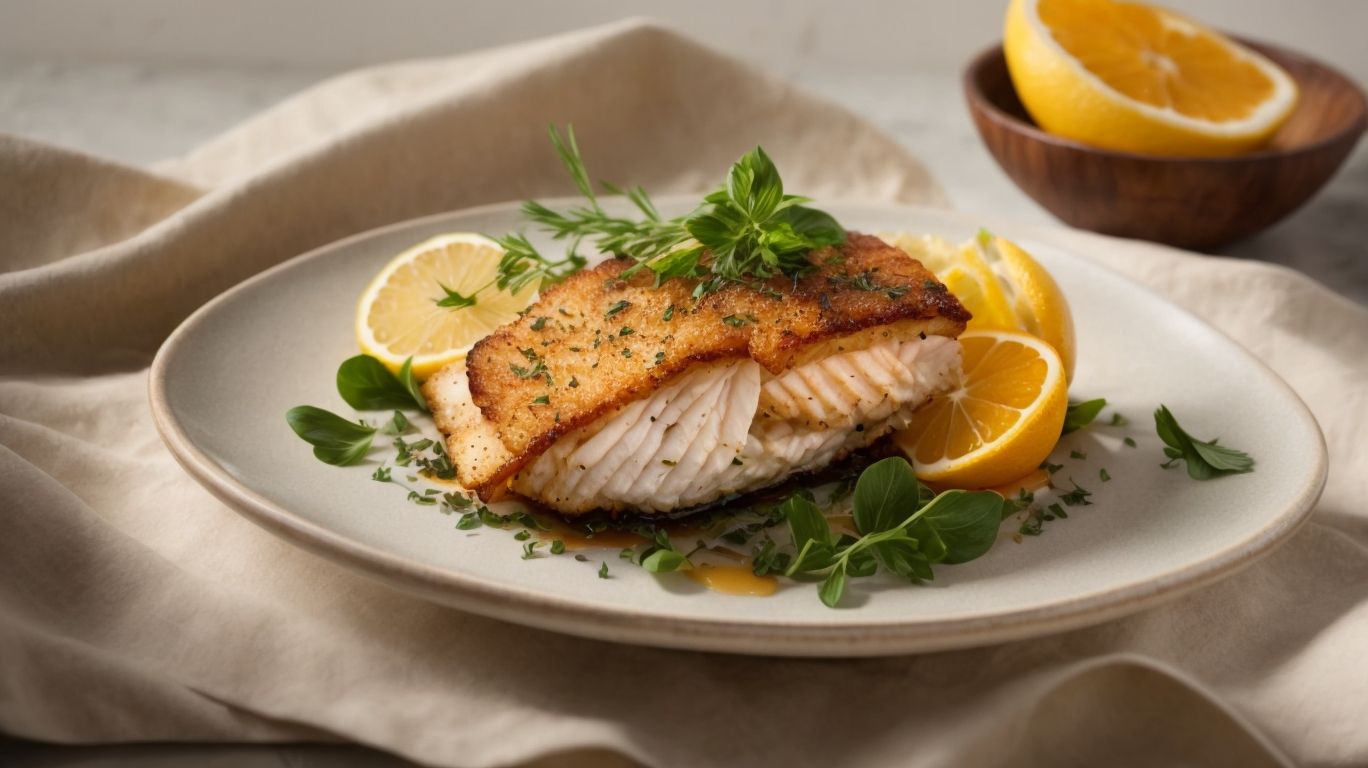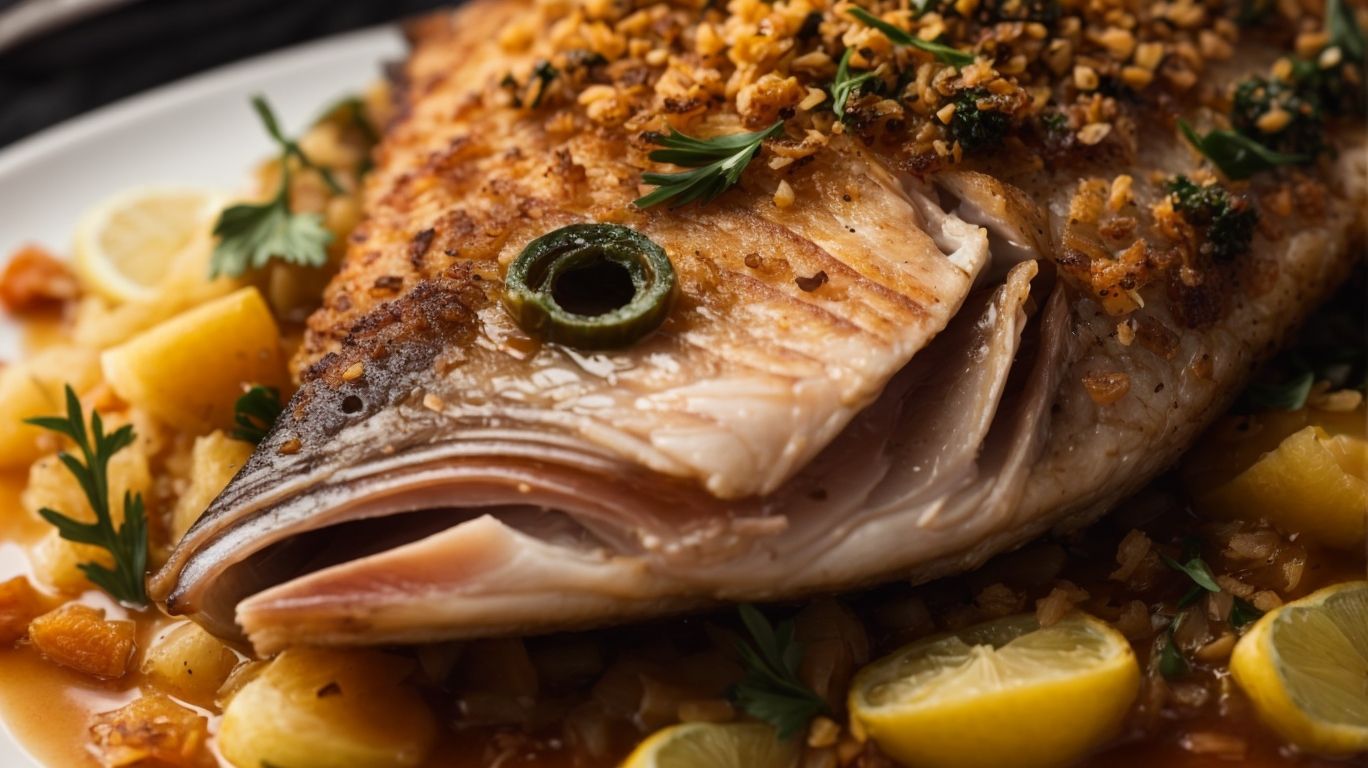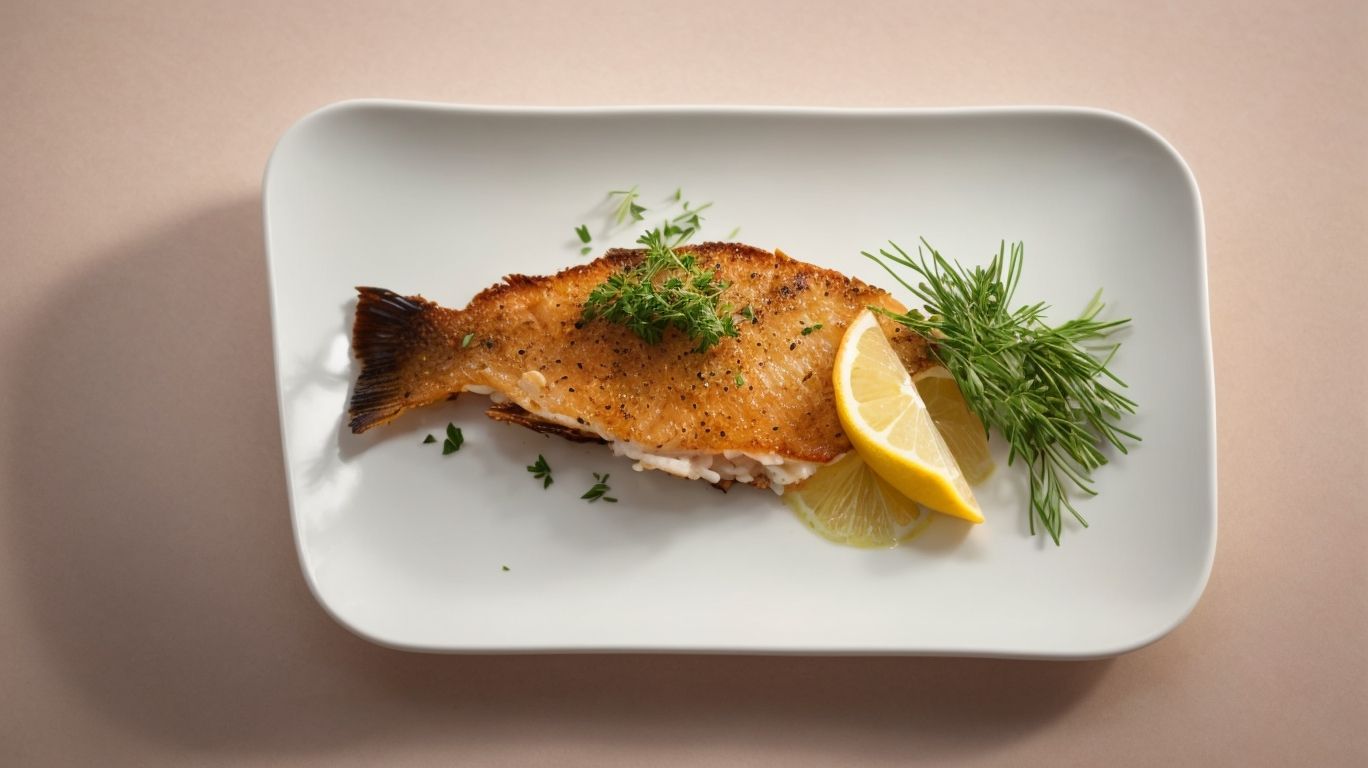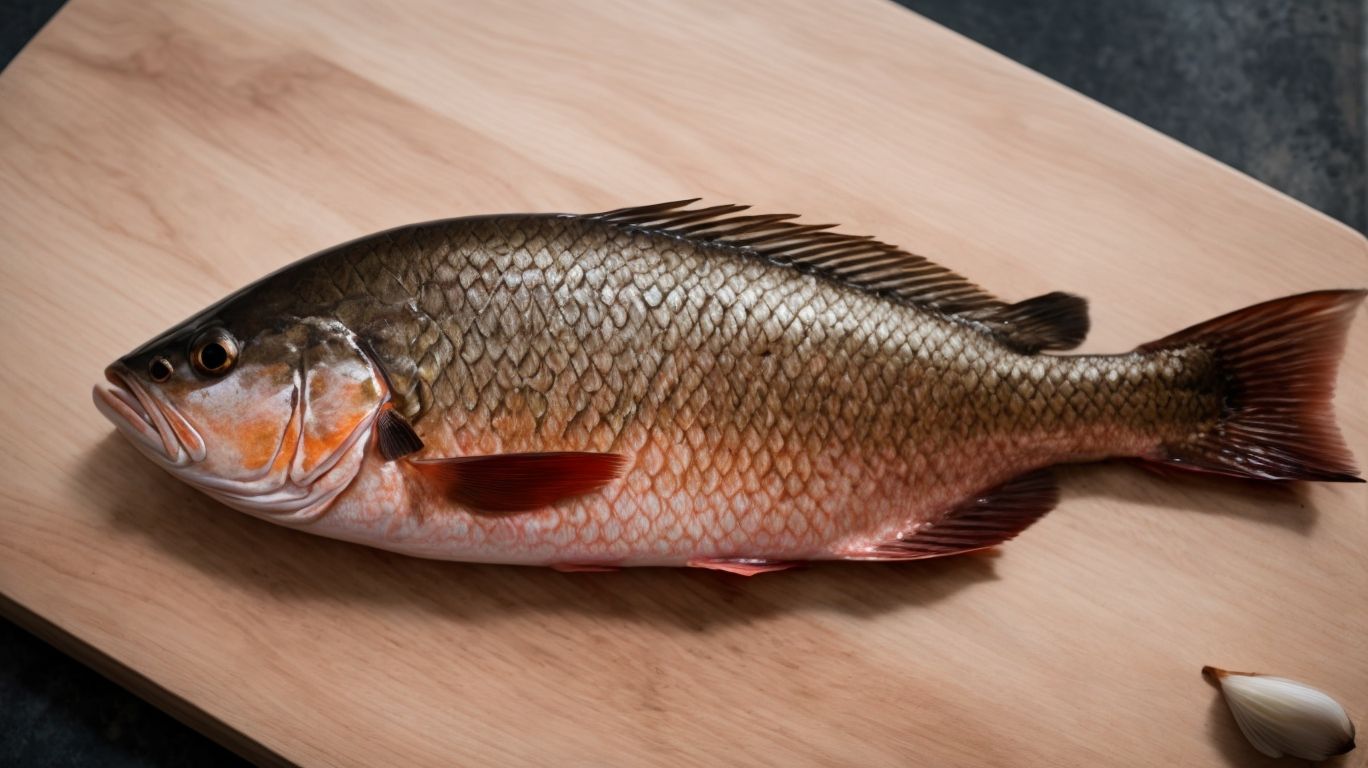How to Cook Skin on Grouper?
Looking to elevate your grouper dishes? Cooking with the skin on grouper can add a whole new dimension to your meals, providing not only a crispy texture but also a boost in nutrients.
We will explore the benefits of cooking with skin on grouper, how to prepare it for cooking, the best cooking methods, flavor combinations, tips for achieving crispy skin, and how to serve and plate this delicious fish.
Join us on a culinary journey to discover the wonders of skin on grouper!
Key Takeaways:
Why Cook with Skin on Grouper?
Cooking with the skin on grouper can enhance the flavor and texture of this firm white fish, adding a delightful crispy element to the dish.
Leaving the skin on grouper while cooking helps in retaining moisture and natural oils within the flesh, resulting in a succulent and juicy final dish. Cooking grouper with its skin on creates a protective barrier that prevents the fish from becoming dry or overcooked. This method also imparts a rich flavor profile to the dish, as the skin absorbs seasonings and marinades, infusing the entire fish with an extra depth of taste.
What Nutrients Does the Skin of Grouper Contain?
The skin of grouper is a rich source of essential nutrients such as omega-3 fatty acids, protein, and vitamins that contribute to a healthy diet.
Omega-3 fatty acids found in grouper skin are crucial for maintaining heart health and reducing inflammation in the body. These healthy fats also support brain function and promote glowing skin. In addition, the proteins in grouper skin aid in muscle growth and repair, making it a valuable addition to a balanced diet.
The vitamins present in grouper skin, including vitamin D and B vitamins, play vital roles in energy metabolism, immune function, and bone health. Vitamin D helps in calcium absorption, crucial for strong bones and teeth, while B vitamins contribute to overall well-being and cellular function.
How to Prepare Skin on Grouper for Cooking?
Preparing grouper with its skin on for cooking involves proper cleaning, seasoning, and ensuring the skin remains intact to enhance the final dish.
Before you start cleaning the grouper, ensure you have fresh fish that has been scaled and gutted. To clean, gently rinse the fish under cold water, removing any remaining scales or impurities with a knife. Pat the fish dry with paper towels, being careful not to damage the skin.
Seasoning options are versatile, such as using a blend of herbs, lemon juice, garlic, and salt. To keep the skin intact during cooking, consider lightly scoring the skin before applying seasoning to prevent curling and maintain moisture.
Should the Skin be Scaled or Descaled?
When cooking grouper with its skin on, it is recommended to descale the skin to ensure a pleasant dining experience without encountering scales.
Descaling the grouper skin is a crucial step that not only improves the visual appeal of the dish but also enhances the overall texture and taste. By removing the scales, you eliminate any potential unpleasant surprises for your diners, ensuring a smooth culinary experience.
The descaling process involves using a knife or scaler tool to scrape off the scales from the skin. It is essential to do this carefully to avoid damaging the flesh underneath. Once descaled, the skin can be left on during cooking to help retain moisture and flavor, creating a crispy outer layer that complements the tender fish meat.
Should the Skin be Removed or Kept on?
Keeping the skin on grouper during cooking can impart additional flavors and textures to the dish, making it a preferred choice for many culinary enthusiasts.
When cooking grouper with the skin on, the natural oils present in the skin help to lock in moisture, resulting in a tender and succulent fish. The skin acts as a protective barrier, preventing the flesh from drying out during the cooking process.
Leaving the skin on can add a crispy and flavorful element to the dish when seared or grilled, enhancing the overall eating experience. The skin can also provide a striking presentation, especially when it crisps up and caramelizes beautifully.
What Cooking Methods Work Best for Skin on Grouper?
Skin on grouper can be cooked using various methods such as grilling, baking, and pan-searing, each offering unique flavors and textures to the dish.
When grilling the grouper with its skin on, the heat from the grill imparts a delicious smoky flavor while keeping the fish moist and tender. The direct exposure to the flames creates beautiful grill marks on the skin, adding visual appeal to the dish.
Baking the grouper in the oven with its skin on results in a more delicate and evenly cooked fish. The skin becomes crispy, providing a delightful contrast in texture to the flaky flesh beneath.
Pan-searing grouper allows for a quick cooking process that seals in the natural juices, creating a golden-brown crust on the skin that enhances the overall taste experience.
Grilling
Grilling grouper with its skin on can create a smoky charred flavor profile that complements the fish’s natural taste and adds a delightful crispy texture.
When grilling grouper, ensuring the grill is preheated to the optimal temperature is crucial for achieving those perfect grill marks while maintaining the skin’s crispiness. By searing the fish over direct heat, you can create those beautiful charred lines that not only enhance the visual appeal but also provide a depth of flavor. Applying a light coat of olive oil or a marinade before grilling can help prevent sticking and promote an even sear. To further enhance the flavor, consider adding a sprinkle of sea salt or a squeeze of citrus during the grilling process.
Baking
Baking grouper with its skin on can result in a moist and tender dish with a crispy exterior, offering a balance of textures and flavors.
When baking grouper with its skin on, it’s essential to preheat the oven to around 400°F (200°C) to ensure the fish cooks evenly and develops a delightful crunch. This temperature allows for the skin to crisp up without overcooking the delicate flesh beneath. Depending on the thickness of the grouper fillet, a general rule of thumb is to bake for approximately 15-20 minutes per inch of thickness. To enhance the flavor, consider seasoning the fish with a blend of lemon zest, garlic, fresh herbs, and a drizzle of olive oil before placing it in the oven.
Pan-searing
Pan-searing grouper with its skin on can create a beautiful golden crust that seals in moisture and enhances the overall presentation of the dish.
For achieving that perfect crispy crust, start by patting the grouper fillets dry with paper towels to remove excess moisture, which can prevent the fish from browning properly. Season the fillets generously with salt and pepper, ensuring that the skin is also well-seasoned.
Proper heat management is crucial in pan-searing grouper. Heat a skillet over medium-high heat and add a high smoke point oil like canola or grapeseed oil. Once the oil starts shimmering, gently place the fillets in the pan skin-side down, pressing them down with a spatula for even contact with the heat.
To enhance the flavors further, add aromatics like garlic, thyme, and lemon zest to the pan. Baste the fillets with the infused oil to impart additional taste. Cook the fish until the skin turns crispy and golden, then carefully flip the fillets to cook the other side briefly.
What are Some Flavor Combinations for Skin on Grouper?

Credits: Poormet.Com – Patrick Ramirez
Skin on grouper pairs well with citrus and herb-infused marinades, as well as a variety of spices and seasonings that elevate the fish’s natural taste.
Regarding enhancing the flavor of grouper with its skin on, the key is to strike a delicate balance between the citrusy brightness and the savory richness.
- Citrus fruits such as lemon, lime, and orange not only impart a refreshing zing to the fish but also help tenderize the flesh and add a subtle sweetness.
- Fresh herbs like parsley, cilantro, dill, and basil bring a burst of aroma and freshness, complementing the seafood’s delicate flavors.
- Spices like cumin, paprika, coriander, and chili flakes can add depth and complexity to the dish, creating a harmonious blend of flavors.
Experimenting with different combinations of these ingredients can lead to a tantalizing dish that delights the taste buds while keeping the skin crispy, offering a satisfying crunch with every bite.
Citrus and Herbs
Combining citrus and herbs with grouper skin can create a refreshing and aromatic flavor profile that complements the fish’s natural richness.
Regarding pairing options, citrus fruits like lemon, lime, and orange can add a zesty kick, while herbs such as parsley, dill, and thyme bring a savory depth to the dish. To maximize the infusion of flavors, consider marinating the grouper with a mixture of citrus juice, herbs, olive oil, and seasonings for at least 30 minutes before cooking.
When cooking grouper with its skin on, grilling or pan-searing are popular methods that help lock in the moisture and flavors. The crispy skin adds a delightful textural contrast to the tender flesh, enhancing the overall dining experience.
Spices and Seasonings
Spices and seasonings offer a versatile way to enhance the flavor profile of grouper with its skin on, allowing for creative and unique taste combinations.
Regarding adding an extra layer of depth to grouper dishes, the possibilities are endless.
Citrusy spices like lemon pepper or a zesty blend of cumin and coriander can add a refreshing kick to the fish’s natural flavors. Alternatively, a smoky seasoning of paprika and garlic can provide a rich and earthy taste that pairs beautifully with the delicate texture of grouper.
Grilled grouper with a sprinkling of Cajun seasoning brings a fiery heat that balances perfectly with the fish’s mildness. Pan-searing the grouper with a medley of herbs such as rosemary and thyme creates an aromatic and savory profile that is sure to tantalize the taste buds.
Exploring different cooking techniques, from blackening to baking, can also influence how these spices interact with the grouper, leading to a diverse range of flavor experiences.
Sauces and Marinades
Sauces and marinades can add depth and complexity to the flavor of grouper with its skin on, offering a customizable way to tailor the dish to personal preferences.
Regarding enhancing the taste of grouper, some popular options for sauces include tangy tartar sauce, zesty lemon butter sauce, and rich garlic aioli. These sauces complement the natural flavors of the fish while adding a burst of additional taste.
For those looking to create their own marinades, a simple blend of olive oil, lemon juice, herbs like parsley and dill, and a dash of salt and pepper can work wonders. Marinating the grouper for at least 30 minutes allows the flavors to penetrate the fish, resulting in a more flavorful and tender outcome.
Proper technique is key when marinating or saucing grouper. To ensure even distribution of flavor, gently massage the marinade onto the fish, making sure to coat both sides thoroughly. When using store-bought sauces, consider heating them up before pouring over the fish to intensify the taste.
Tips for Achieving Crispy Skin on Grouper

Credits: Poormet.Com – Ralph Jones
To achieve a crispy skin on grouper, ensure the fish is patted dry, use high heat cooking methods, and refrain from flipping the fish too frequently during cooking.
Another essential technique for achieving that perfect crispy skin is to let the fish come to room temperature before cooking. This ensures even cooking throughout and helps the skin crisp up uniformly.
When searing the grouper, make sure the pan is preheated properly to create a nice sear on the skin without sticking. A hot pan will also help to seal in the juices, keeping the flesh moist and flavorful.
Furthermore, seasoning the skin with salt before cooking can draw out excess moisture, allowing the skin to become crispier during the cooking process.
How to Serve and Plate Skin on Grouper?
When serving skin on grouper, consider placing the fish on a bed of hearts of palm salad and drizzling it with a scallion lemon butter sauce for a delightful presentation.
For an added touch of elegance, you may also sprinkle some toasted almond slivers on top of the grouper to provide a subtle crunch and nutty flavor.
Alternatively, serve the dish with a side of creamy parmesan risotto, allowing the flavors to harmonize, creating a luxurious dining experience.
Pairing the grouper with a refreshing cucumber mint salsa can bring a burst of freshness that complements the richness of the fish.
Conclusion and Final Thoughts

Credits: Poormet.Com – Henry King
Cooking with skin on grouper opens up a world of culinary possibilities, where flavors, textures, and presentation come together to create a memorable dining experience.
Cooking grouper with its skin on not only adds a layer of protection to the delicate flesh during the cooking process but also helps retain moisture and intensify the flavors. The skin acts as a natural barrier, sealing in the juices and ensuring that the fish remains succulent and tender. Leaving the skin on enhances the visual appeal of the dish, with crispy and golden brown skin adding a textural element that complements the tender flesh of the fish.
When serving skin-on grouper, consider pairing it with vibrant side dishes such as citrus-infused quinoa salad or roasted vegetables to add a burst of freshness and color to the plate. The contrast of the crispy skin against the soft flesh of the fish creates a perfect balance of textures that will delight your taste buds. The versatility of this cooking approach allows for various seasoning options, from simple salt and pepper to more complex herb and spice blends, offering endless opportunities to customize the dish according to your palate.
Frequently Asked Questions
How to Cook Skin on Grouper?
Cooking grouper with its skin on can add extra flavor and texture to your dish. Here are some commonly asked questions about cooking grouper with its skin on:
1. Do I need to remove the skin before cooking grouper?
It is not necessary to remove the skin before cooking grouper. In fact, cooking the grouper with its skin on can help keep the fish moist and add flavor to the dish.
2. How do I prepare the grouper skin for cooking?
Before cooking, make sure to remove any excess scales or debris from the skin. You can also lightly score the skin with a knife to prevent it from curling up while cooking.
3. What cooking methods work best for grouper with skin on?
Grouper can be cooked with its skin on using a variety of methods such as grilling, baking, broiling, or pan-searing. The key is to make sure the skin is crispy and the flesh is cooked through.
4. How do I know when the grouper is done cooking?
The flesh of grouper should be opaque and flaky when cooked through. To be sure, you can use a meat thermometer to check that the internal temperature has reached at least 145°F (63°C).
5. Can I eat the skin of cooked grouper?
Yes, the skin of cooked grouper is safe to eat and can add extra flavor and texture to your dish. However, make sure to remove any remaining scales before consuming.
6. What are some ways to season grouper with skin on?
Grouper can be seasoned with a variety of herbs and spices to enhance its flavor. Some popular options include lemon, garlic, cayenne pepper, and blackened seasoning. Experiment with different combinations to find your favorite flavor profile.




